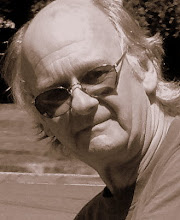


Some stuff one can't throw away. A year or so ago I built a desk for Kevin Kubota, the photographer and he had discovered an unusual material which he wanted included in the design. It's a quarter inch thick, a translucent plastic-like material with patterned strips of bamboo embedded, and it is an environmentally respectful product. In the design exploration we discovered that the bamboo color echoed the sapwood tone of eastern walnut. (Often the sapwood of walnut is discarded, a notion that suited neither of us.)
So, desk completed, I ended up with a few small pieces of this material, which I have been hoarding. Then came the message (oooo-eee-oooo) to build a wall cabinet for storing CDs or DVDs or both. The overarching idea was simplicity, function, and unshowy craftsmanship.
Then I remembered the diagonal-cut doors I had included in a media cabinet for clients Gary and Tricia some years ago. About seven degrees, as I recalled, with apologies to Kevin Bacon.
Here's the result. Initial sketches explored the muntins (horizontal separators of panes) being aligned or being aligned but at right angles to the slanted stiles. Neither caused any friendly dashboard lights to come on. Because the left door is smaller at the bottom than at the top--a visually disturbing element--it seemed best to raise that muntin to give the doors equal weight.
The overall dimensions were driven by the Fibonacci series: 1,1,2,3,5,8,13,21,34, etc.
The math is easy--add the prior two numbers to get the next number. The implications are huge. For us with a small calculator and a ruler, we can learn that the ratio of one number to its neighbor tends to become the same as the series progresses. I think that's dumbfounding. My friend Dan, the graduate engineer, says it's reasonable.
The cabinet had no opinion, but seems to be happy at about 22 inches by about 32 inches.
On this very informative site about Fibonacci we learn that this realm is a "constantly expanding branch of number theory."
Meantime fiddling with these numbers makes a pleasantly-proportioned cabinet, would you not agree?
And yes, it is for sale, $395 plus shipping.
Addendum 8/10/09....And it is sold!
















